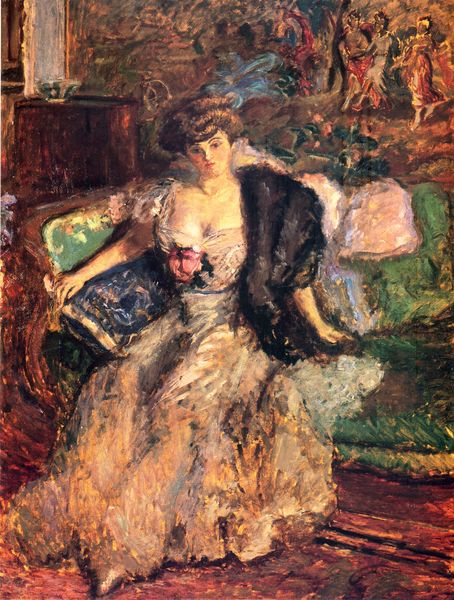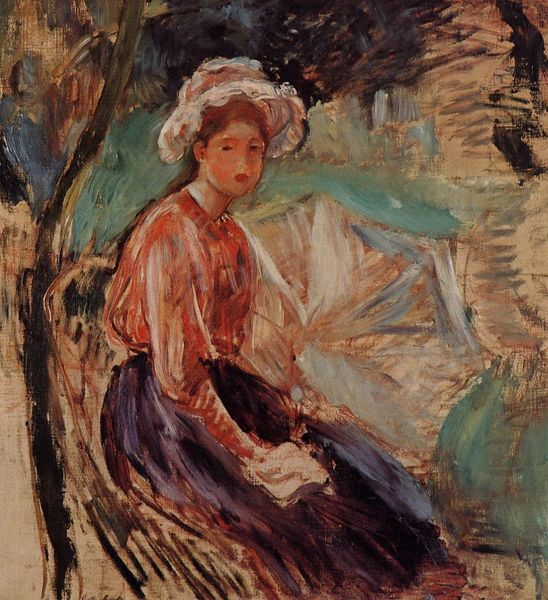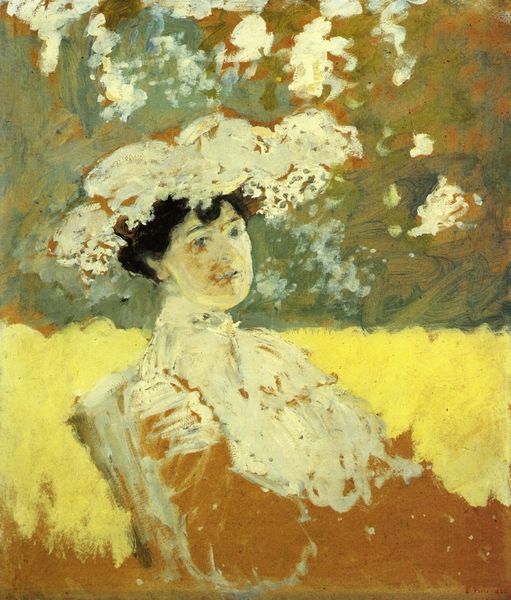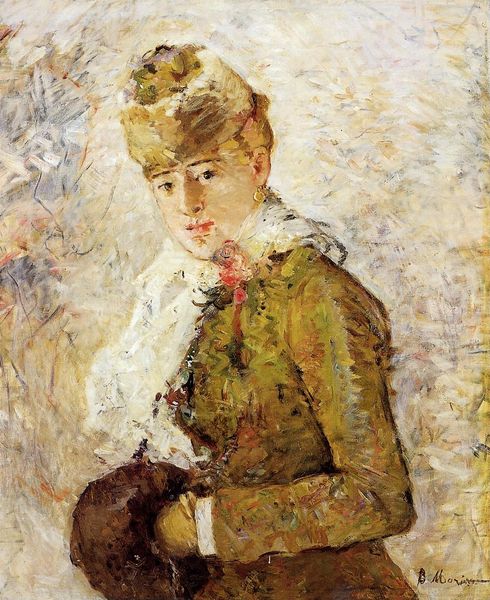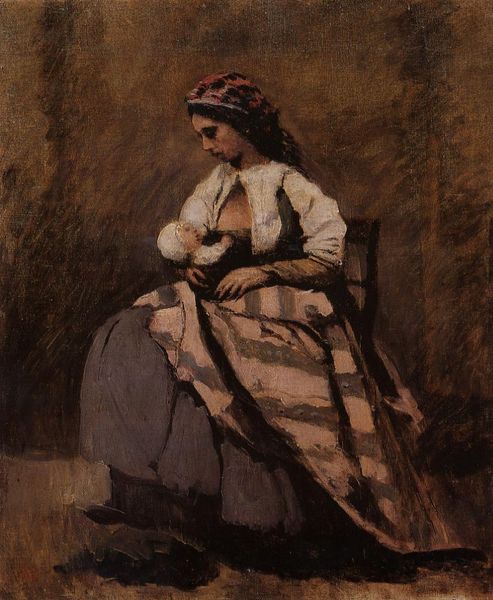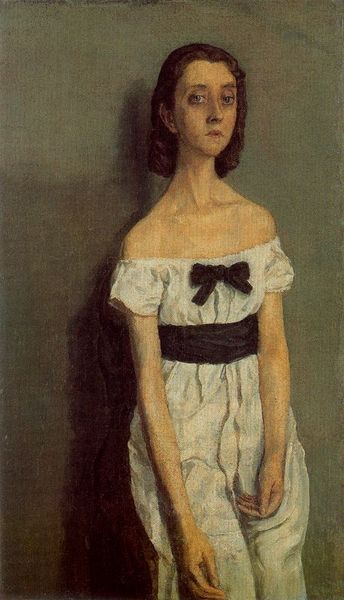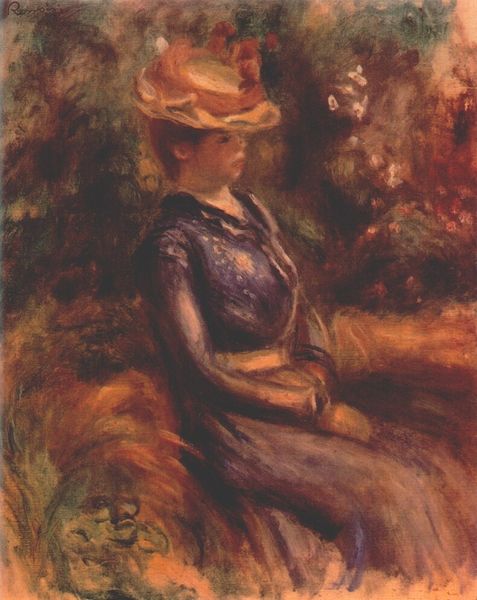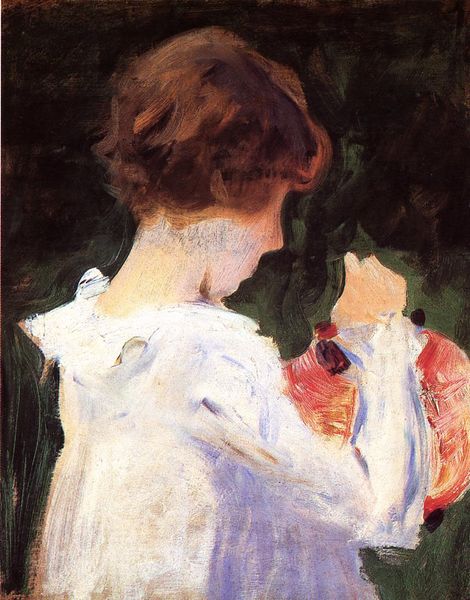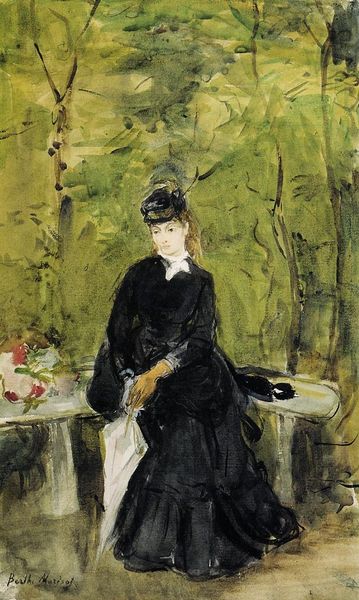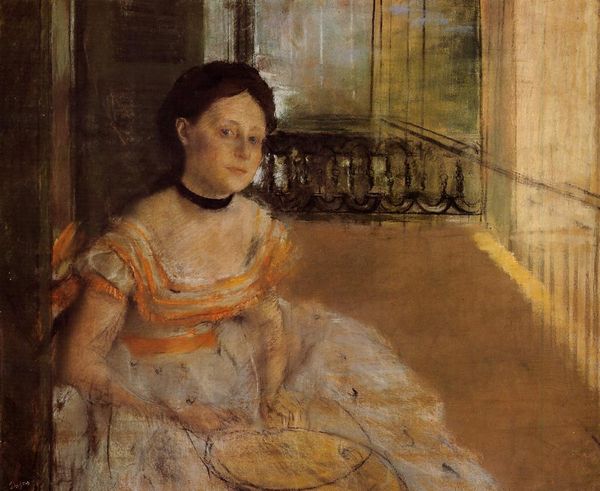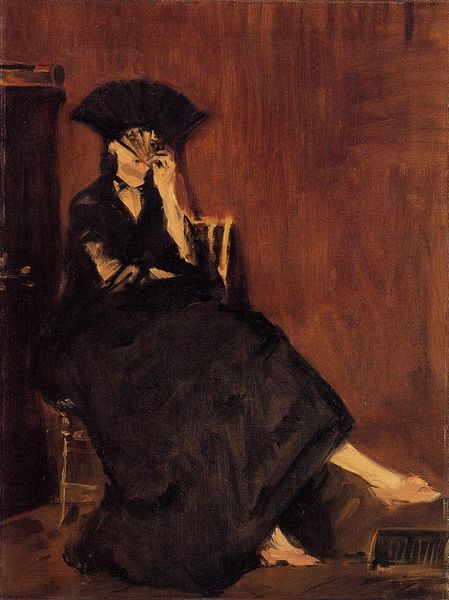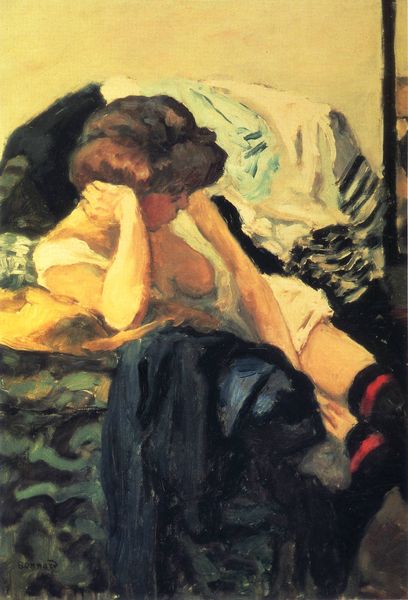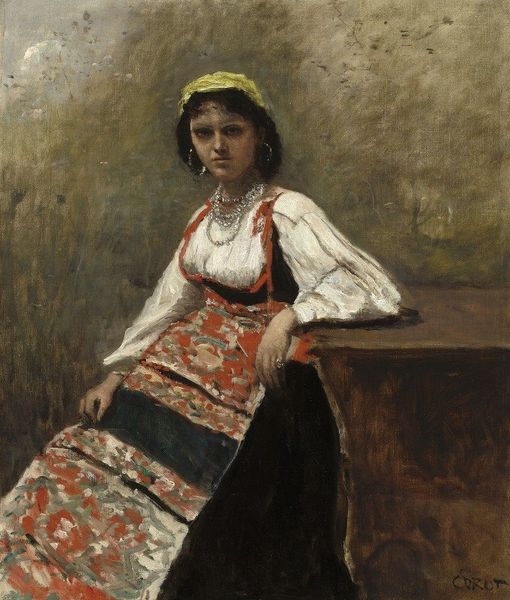
painting, plein-air, oil-paint
#
portrait
#
painting
#
impressionism
#
plein-air
#
oil-paint
#
landscape
#
oil painting
#
genre-painting
Dimensions: 42 x 31 cm
Copyright: Public domain
Curator: This is Gustave Caillebotte's "Woman Seated on the Lawn," painted around 1874. It's an oil-on-canvas work, quite characteristic of Impressionist plein-air painting. Editor: Immediately, the bold brushstrokes strike me, especially on that skirt. It's almost abstract, all energetic dabs of paint, completely divorcing the figure from photorealism. It's more about capturing the *idea* of a woman on a lawn. Curator: Absolutely. Caillebotte’s process here is key. Notice how the brushwork not only depicts form but also constructs it. He uses paint less as a descriptive tool and more as a physical building block. Consider, too, the social context; who has the leisure to be seated on a lawn, painted? Editor: Precisely, we must also recognize the sitter’s status. That dress! It signals wealth, or at least a particular aspiration within the rising bourgeoisie. The carefully constructed, artificial pose is something else to keep in mind: The artist's project is as much social representation as personal expression. How would audiences view her in Parisian salons at the time? Curator: Her detachment is powerful, isn't it? The way she seems to not quite meet the viewer's eye… And in regards to materiality, the interplay of light and shadow is particularly striking in how Caillebotte uses thicker, almost sculptural, applications of oil paint to evoke the textures of both the dress and the natural landscape surrounding her. I can’t help thinking how his privileged social standing, as an heir to a family fortune, afforded him this freedom in handling paint and subject matter. Editor: You're spot-on regarding the socioeconomic implications. Beyond technique, consider the venues where the piece would have been exhibited and consumed. The lack of classical training—or maybe the rejection of it—became a status symbol. He’s consciously distancing himself from academic art, even while benefitting from the social structures that supported that very establishment. Curator: The painting serves as a window into a particular stratum of Parisian society during a time of immense social change. Understanding how such works operated within these structures provides valuable context for interpreting not only the painting but also the broader societal values reflected within. Editor: I'm left thinking about how the material act of applying paint serves both to represent a fleeting moment in time and simultaneously embody the weight of class and societal expectation. The layers of meaning are quite palpable here.
Comments
No comments
Be the first to comment and join the conversation on the ultimate creative platform.
